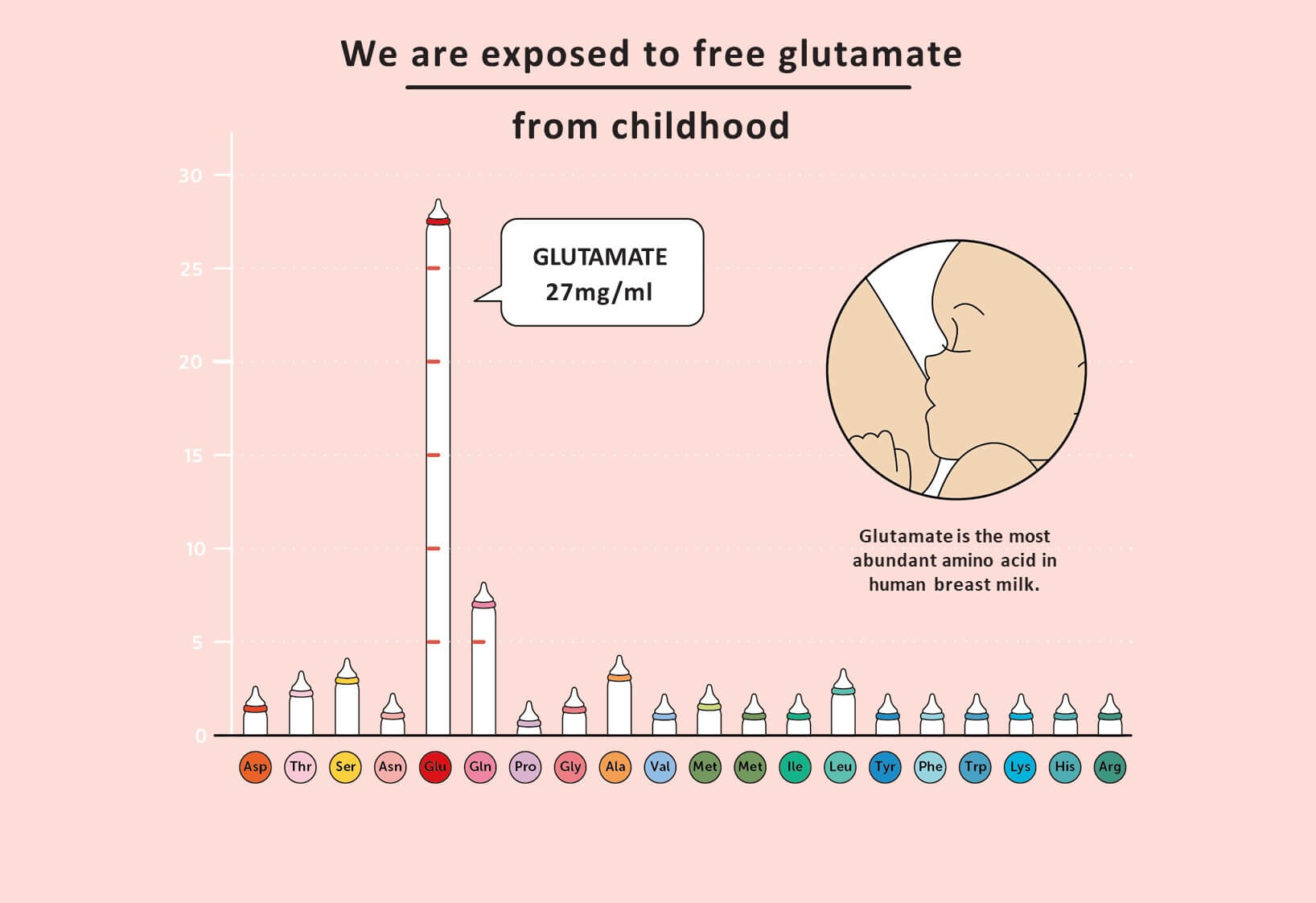Infant’s first exposure to umami
Umami plays an extremely important role in the survival of each and every individual. This is particularly true during infancy. Human gestation lasts for about 40 weeks, during which time a new life develops from a single fertilized cell into a fully functioning human infant, ready to enter the world. For these 40 weeks, the embryo lives in the amniotic fluid, and by around week 16, the growing baby has developed taste receptors which allow it to sample various tastes from the mother’s amniotic fluid itself.1 The amniotic fluid is rich with free amino acids, and among them, glutamate is found in the highest concentration.2 that means that umami is one of the first tastes we experience, before we’re even born!

Once an infant is born, for the first half year or so, in most of the cases it’s only source of nutrition is breast milk. And like amniotic fluid, breast milk is rich in free amino acids, which are amino acids that are not part of proteins. Unsurprisingly, glutamate has the highest concentration among these amino acids, at 44.17%. This means that breast milk includes the taste of umami, which the infant is already familiar with from the womb. Interestingly, the flavor of umami in breast milk tends to vary according to nationality, due to the mother’s diet. Therefore, for example, Japanese breast milk may have a hint of soy sauce or miso soup, while Italian breast milk may taste more like tomato and Parmesan cheese.
